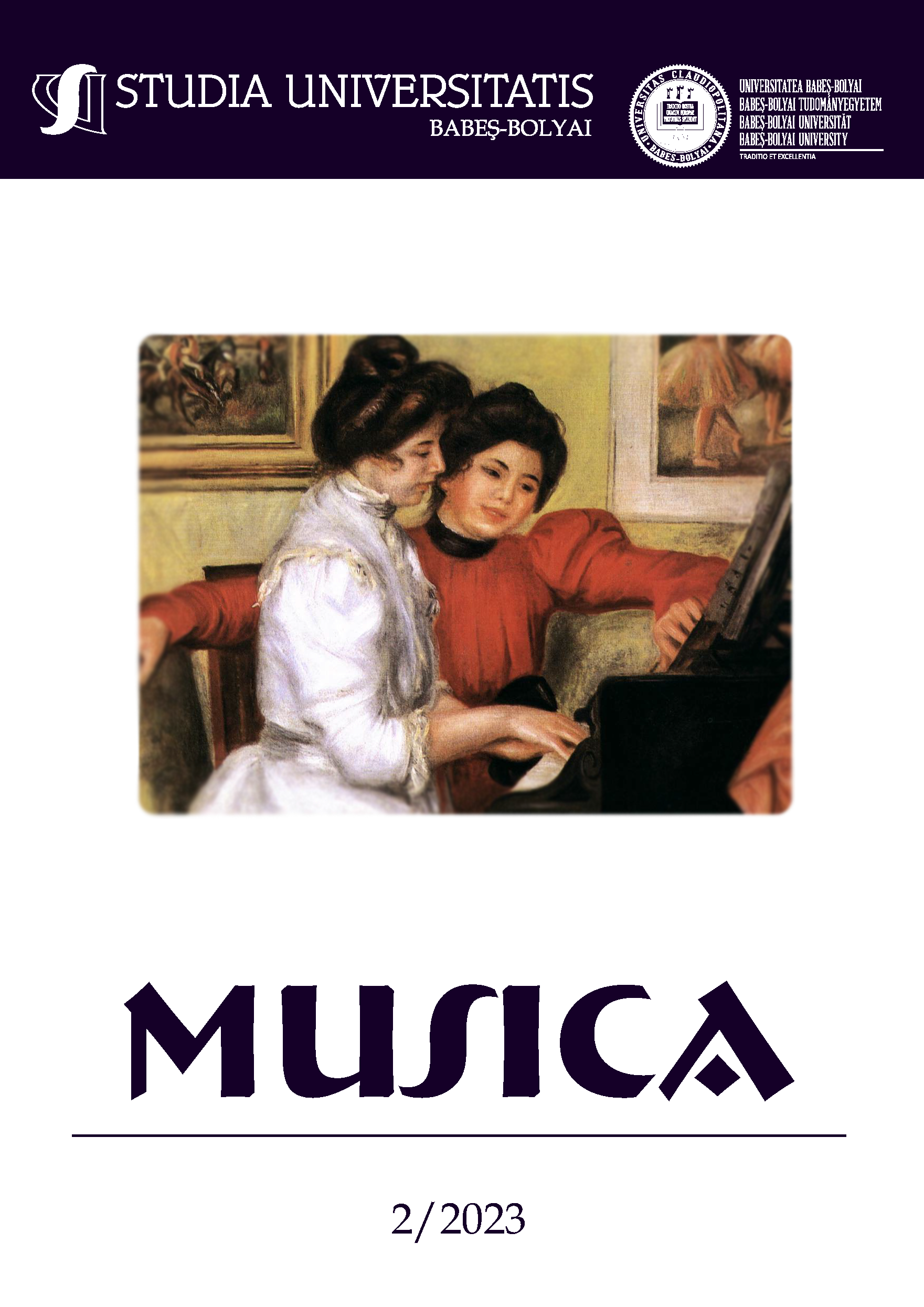Analytical Aspects of the Three Versions of "Confitebor Tibi, Domine" by Claudio Monteverdi
DOI:
https://doi.org/10.24193/subbmusica.2023.2.22Keywords:
Renaissance music, Claudio Monteverdi, motet, sacred music.Abstract
This work focuses on the musical analysis of Monteverd’s composition styles in his sacred music. The motets, Confitebor tibi, Domine were printed in 1640 in collection of Selva morale e spiritual. Even in these rigidly bound works, Monteverdi gives full intensity to the meaning of every word of the text, trying to bring it to life in a vivid and convincing way. These three versions of Psalm 111 present different compositional techniques, through which Monteverdi wishes to emphasize the content of the text.
References
Alwes, Chester L., A History of Western Choral Music: from Medieval foundations to the Romantic Age, Volume 1, Oxford, University Press, 2015.
Apel, Willi; Davison Archibald T., Historical Anthology of Music, Volume I: Oriental, Medieval and Renaissance Music, Massachusetts, Harvard University Press, 1949.
Brown, Howard Mayer, A reneszáns zenéje, Budapest, Zeneműkiadó, 1980.
Bukofzer, Manfred, Studies in Medieval and Renaissance Music, New York, W. W. Norton & Company, 1950.
Calcagno, Mauro, From Madrigal to Opera. Monteverdi’s Staging of the Self, California University Press, 2012.
Carter, Tim, Monteverdi and His Contemporaries, Ashgate, 2000.
Chew, Geoffry, Monteverdi Claudio, The New Grove Dictionary of Music and Musicians, Editor Stanley Sadie, Oxford University Press, 2001.
Crocker, Richard L., A History of Musical Style, New York, Dover Publications, 2014.
Dell’Antonio, Andrew, Listening as Spiritual Practice in Early Modern Italy, California University Press, 2011.
Denis, Arnold, Master Musicians- Monteverdi, Oxford University Press, 1963.
Goldfarb, Hilliard T., ed., Art and Music in Venice. From the Renaissance to Baroque, Yale University Press, 2013.
Golcea, Ioan-Badea, Florin, Creația corală a renașterii, resurse și problematici interpretative, Târgoviște, Editura Transversal, 2010.
Gruber, R. I., Istoria Muzicii universale, vol. I, partea I, București, Editura muzicală, 1963.
Kelemen Imre, A Zene története 1750-ig, Budapest, Nemzeti tankönyvkiadó, 1988.
Lax, Éva, Claudio Monteverdi, Levelek, Elméleti írások, Kávé Kiadó, 1988.
Leech - Wilkinson Daniel, The Cambridge Companion to Monteverdi, Cambridge University Press, 2007.
Leopold, Silke, Monteverdi: Music in Transition, Clarendon Press, Oxford, 1991.
Palisca, Claude V.; Grout, Donald Jr.; Burkholder, Peter J., A History of Western Music. Seventh Edition, New York, W. W. Norton & Company, 2010.
Rebatet, Lucien, Une histoire de la musique, Paris, Robert Laffont, 1973.
Redlich, Hans Ferdinand. Claudio Monteverdi: Life and Works. trans. Kathleen Dale. London: Oxford University Press, 1952.
Redlich, Hans Ferdinand Monteverdi’s Religious Music, Music and Letters, Vol. 27, No. 4, October 1946.
Roberts, Kimberly Ann, The selected sacred solo vocal motets of Claudio Monteverdi including Confitebor tibi, Domine Louisiana State University and Agricultural and Mechanical College, 2007.
Reese Gustav, Music in the Renaissance, New York, W. W. Norton & Company, 1959.
Schrade, Leo, Monteverdi: Creator of modern music, New York, Norton, 1950.
Șorban, Elena Maria, Noi și istoria muzicii: Permanențe creative, Eikon, Cluj-Napoca, 2013.
Scores
Claudio Monteverdi, Confitebor Primo, Universal Edition
Claudio Monteverdi, Confitebor Secondo, Choral public Domain Library, Vesion 1.1 – 31.07.2011, Edition by Peter Rottlander
Claudio Monteverdi, Confitebor Terzo, Sämtliche Werke, herausgegeben von G. F. Malipieri, Bp XV/2, Universal Edition, 1968
Downloads
Published
How to Cite
Issue
Section
License
Copyright (c) 2023 Studia Universitatis Babeș-Bolyai Musica

This work is licensed under a Creative Commons Attribution-NonCommercial-NoDerivatives 4.0 International License.






